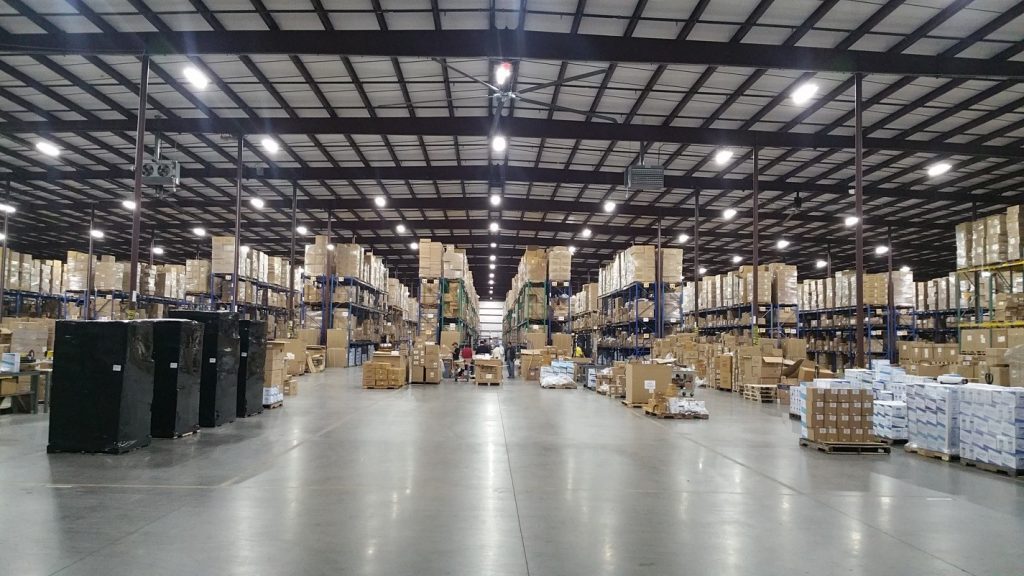
Warehouses are a critical part of the supply and distribution network for industrial, commercial, and consumer products. With advancements in logistics based technology, warehouse operators are under constant pressure to reduce their costs and to help manufacturers and shippers to store and deliver raw materials and finished goods at the lowest possible prices. Cost savings are typically achieved through reduction of overhead costs, and the most direct way to achieve this is with LED Lighting.
Warehouse lighting accounts for 50%+ of a warehouse’s energy consumption. By one recent measure, if all the warehouses in the United States were to convert to LED lighting, they would save more than $10 billion in annual electricity costs. High bay metal halide or T5 light fixtures are currently the most common forms of warehouse lighting, but warehouses are transitioning to LED’s to achieve the cost savings estimated by those recent measures.
Benefits of LED Warehouse Lighting
LED warehouse lighting generates the same or better quality light typically with less than half of the average electricity consumption as legacy lighting fixtures. Warehouse operators will typically recover all of the costs of a transition to LED Lighting in 2 years or less. Also, unlike traditional high-bay industrial lighting fixtures, LED lights come to full illumination immediately after they are powered on. Warehouses will have no down time with LED lighting while they wait for the lights to come on.
Further, an LED warehouse lighting fixture will continue to generate light at or near full capacity for 50,000 hours, and in some cases for up to 100,000 hours of continuous use. This durability reduces warehouse lighting maintenance and repair costs, as well as down time associated with interruptions in warehouse operations while lighting fixtures are repaired or replaced.
LED warehouse lighting also improves the overall safety and efficiency of a typical warehouse operation. Modern warehouses are fast-paced and always busy. Warehouse employees are charged with moving and picking products with little time for deliberation. Poorly-lit warehouses slow down these operations and bad lighting increases the risks of errors and accidents. LED warehouse lighting can be tuned to include light wavelengths that improve employee alertness and to give employees a better opportunity to see subtle details in the products they are moving, all of which further reduces the risks of errors. Moreover, different types of LED warehouse lighting fixtures come with advanced directional capability and frosted lenses that create near-uniform lighting distribution across all parts of a warehouse. Shadows and dark spots will no longer be a problem with a properly-configured LED warehouse lighting system
Operators who are seeking to reduce the carbon footprints of their warehouses will also be able to meet that goal with LED warehouse lighting. LED bulbs and fixtures include no hazardous materials that will contaminate landfills when they reach the end of their operating spans. Because it consumes less electricity, LED warehouse lighting also places lower demands on energy-generation facilities.
